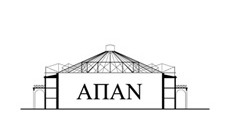Babaie, Gibson (eds), The Mercantile Effect. Art and Exchange in the Islamicate World (2018)
[Bibliography]
Anna Ballian, Frederica Gigante, Francesco Gusella, Negar Habibi, Gul Kale, Dipti Khera, George Manginis, Zaheen Maqbool, Christos Merantzas, Alexandra Roy, Nancy Um, et al The Mercantile Effect. Art and Exchange in the Islamicate World during the 17th and 18th Centuries, Sussan Babaie and Melanie Gibson (eds), Gingko Library Art Series, (Gingko Library, University of Chicago Press, 2018)
“This lavishly illustrated volume of essays introduces a fascinating array of subjects, each exploring an aspect of the far-reaching “mercantile effect” and its impact across Western Asia in the early modern era. In the seventeenth and eighteenth centuries the increased movement of merchants and goods from China to Europe brought desirable commodities to new markets, but also spread ideas, tastes, and technologies across Western Asia as never before. Through the newly-established Dutch, English, and French East India companies, as well as much older mercantile networks, commodities including silk, ivory, books, and glazed porcelains were transported both east and west. The Mercantile Effect shows a fascinating array of trade objects and the customs and traditions of traders that brought about a period of intense cultural interchange.”
Contents: Foreword by Melanie Gibson. Introduction by Sussan Babaie, The Mercantile Effect: On Art and Exchange in the Islamicate World. Suet May, Lam Fantasies of the East: ‘Shopping’ in Early Modern Eurasia. Amy S. Landau, The Armenian Artist Minas and Seventeenth-Century Notions of ‘Life-Likeness’. William Kynan-Wilson, ‘Painted by the Turcks themselves’: Reading Peter, Mundy’s Ottoman costume Album in Context. Nicole Kançal-Ferrari, Golden Watches and Precious Textiles: Luxury Goods at the Crimean Khans’ Court and the Northern Black Sea Shore.
Nancy Um, Aromatics, Stimulants, and their Vessels: The Material Culture and Rites of Merchant Interaction in Eighteenth-Century Mocha. Federica Gigante, Trading Islamic Artworks in Seventeenth-Century Italy: the Case of the Cospi Museum. Anna Ballian, From Genoa to Constantinople: The Silk Industry of Chios. Christos Merantzas, Ottoman Textiles within an Ecclesiastical Context: Cultural Osmoses in Mainland Greece. Francesco Gusella, Behind the Practice of Partnership: Seventeenth-Century Portuguese Devotional Ivories of West India. Gül Kale, Visual Embodied Memory of an Ottoman Architect: Travelling on Campaign, Pilgrimage and Trade Routes in the Middle East. Contributors. Total pages 160, 170 color plates, hard cover (cloth) or paper.
About the Editors: Melanie Gibson is the senior editor of the Gingko Library Arts Series. Sussan Babaie is the Andrew W. Mellon Reader in the Arts of Iran and Islam at the Courtauld Institute of Art, University of London.
